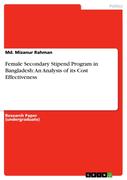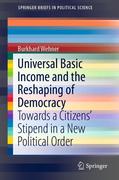35 Results for : stipend
-

How to Graduate College for Free: Winning a National Merit Scholarship & Other Options , Hörbuch, Digital, ungekürzt, 46min
With college costs continuing to skyrocket, many students (and parents) find themselves scrambling to pay for higher education. Unfortunately, a large percentage of these families find their savings fall short, and are forced to dig themselves into a massive hole of student loans. This is a hole that may take them decades to escape after they graduate college. Understandably, then, students faced with this prospect decide to search for a different method of financing their college education. The good news is, it is completely possible to graduate college for free, or at least at a dramatically reduced expense. There are several different options available for those who wish to graduate college for free. Some of these options are more feasible for the average student than others. For those of you who would prefer not to spend the better part of $100,000 for a degree, the primary choices are an athletic scholarship, military funding, or a merit scholarship. This audiobook will primarily focus on merit scholarships. For more good news, you do not have to be a certifiable genius in order to win a major merit scholarship, which can give you a free full-ride education at many different universities. The National Merit Scholarship Program is the most well-known of these major scholarship programs. When you take the PSAT/NMSQT (National Merit Scholarship Qualifying Test), you begin the competition process. Levels of awards in the National Merit Program are Commended Student, Semifinalist, Finalist, and National Merit Scholar. Even earning a semifinalist placement can lead to a scholarship for free tuition at many major universities, while a full-fledged National Merit Scholar can receive free tuition, free room and board, and a stipend as well at some schools. Now, some brilliant students fail to win a National Merit Scholarship. And, some surprisingly "average" students do win a National Merit Scholarship, allowing them to attend college at little or ungekürzt. Language: English. Narrator: C.J. McAllister. Audio sample: https://samples.audible.de/bk/acx0/119070/bk_acx0_119070_sample.mp3. Digital audiobook in aax.- Shop: Audible
- Price: 9.95 EUR excl. shipping
-

Career research support - PhD with stipend Proposals
Career research support - PhD with stipend Proposals - PhD with stipend proposal: ab 61.99 €- Shop: ebook.de
- Price: 61.99 EUR excl. shipping
-

Female Secondary Stipend Program in Bangladesh: An Analysis of its Cost Effectiveness
Female Secondary Stipend Program in Bangladesh: An Analysis of its Cost Effectiveness - 1. Auflage: ab 16.99 €- Shop: ebook.de
- Price: 16.99 EUR excl. shipping
-

Universal Basic Income and the Reshaping of Democracy
Universal Basic Income and the Reshaping of Democracy - Towards a Citizens' Stipend in a New Political Order: ab 53.49 €- Shop: ebook.de
- Price: 53.49 EUR excl. shipping
-
Piano Recital I
PARTITA No. 2 in C minor, BWV 826 JOHANN SEBASTIAN BACH (1685-1770) Bach's six Partitas date from the ripe period following his move to Leipzig (1723). His first published instrumental works, they appeared individually in the years 1726-31 (the present C minor Partita in 1727) and were assembled as his 'Opus One' in 1731, collectively titled Clavierübung (keyboard Practice or Exercise). According to Bach's first biographer, Johann Nicolaus Forkel, the partitas made 'a great noise in the musical world. Such excellent compositions for the clavier had never been heard before. Anyone who had learnt to perform well some pieces out of them could make his fortune in the world thereby,... they are so brilliant, well sounding, expressive, and always new.' Forkel was correct in his appraisal, and these creations do indeed unfailingly renew themselves. They are effectively playable on piano, harpsichord and clavichord, and lend themselves to a multitude of interpretations. The Partitas (known also as German Suites, as Bach announced, consisted of 'Preludes, Allemandes, Courantes, Sarabandes, Gigues, Minuets, and other Galanteries.' The Partita in C minor opens with a Sinfonia rather than a Preludium which is in effect a three-stage Italian Ouverture beginning with a clarion call to order. The proscribed Allemande, Courante and Sarabande are filled out with a Rondeau (replacing the Menuet} and a vigorous, driving Capriccio in lieu of the concluding Giga. VARIATIONS in F minor, Hob. XVII : 6 SONATA No. 53 in E minor Hob. XVI : 34 JOSEPH HAYDN (1732-1809) The F minor Variations (sometimes commonly known as 'Andante con Variazioni') were composed in 1793, and exemplify the mastery and tremendous emotional breadth of some other late Haydn symphonies. As a matter of fact, one can draw a striking analogy between the Tema of this masterpiece and one of the so-called 'Drumroll' Symphony's second movement: Both of these are double themes consisting of a first part minore, it's sequel in answering maggiore. Of course each variant becomes increasingly more embellished until the coda where a climax of astonishing intensity and subdued drama is joltingly introduced. When young Beethoven was sent to Vienna with a stipend from Count von Waldstein so that the burgeoning composer could study with Haydn and 'regain the soul of Mozart' (who had just died), I daresay that Beethoven did indeed inherit much from Mozart, but Haydn probably had the biggest influence on his young charge. These sublime Theme and Variations offer evidence for this writer's assertion. The Sonata in E minor was first published in July 1773 by Beardmore & Birchall of London but almost certainly, Haydn had composed it considerably earlier. In any event, this E minor Sonata is one of the finest and most popular of the master's 'middle period.' It's first movement, Presto's engaging, disjunctive style is for me reminiscent of C.P.E. Bach innovative mood. One noteworthy feature is the way the music keeps breaking up into small paragraphs and then resuming it's forward course. Such drama and imagination! In contrast, the Adagio slow movement sings with a long, ruminative line. As the movement reaches it's apex, the pulse begins to quicken and, almost without resolution we find ourselves face to face with a sprightly Finale, Vivace molto innocentemente. This linking of these two movements is very much a harbinger of the familiar device used by Beethoven in so many of his mature compositions (e.g. The Fourth and Fifth Piano Concertos, the Violin and Triple Concertos, the Waldstein, Appassionata and Lebewohl Sonatas and the Serioso String quartet). DREI KLAVIERSTÜCKE, Op. 117 JOHANNES B HMS (1833-1897) During the Summer of 1890, Brahms completed his String Quintet in G major, Op. 111 and, in September, sent the manuscript to Fritz Simrock, his publisher. Simrock had hoped Brahms would oblige with a Fifth Symphony and indeed, the composer had begun work on such a score. But, alas, along with the Quintet's manuscript, came a note: ' The time has come for you to say goodbye to any further compositions of mine.' A new symphony was out of the question and Brahms facetiously added further that he had thrown his leftover manuscript paper in the river at the end of his vacation at Bad Ischl. Incentive was restored by a visit to Meiningen in March 1891. The rejuvenating catalyst was an evidently superb musician named Richard Mühfeld and posterity owes to him a substantial debt for causing Brahms' change of heart. Having come forth with two works inspired by Mühlfeld, the Trio for Clarinet, Cello and Piano, Op. 114 and the Quintet for Clarinet and Strings Op. 115, and with his creative juices restored, the 'retired' master, as an extra bounty, penned a superb collection of short piano pieces, Op. 116-119, his two sonatas Op. 120, the Ernste Gesang, Op. 121 and the Chorale Preludes for Organ, Op. 122. The three Intermezzi Op. 117 were published in 1892, the same year as Op. 116. No. 1 in E Flat, an Andante in 6/8 metre with a second section, piu adagio--un poco andante, is a German version of a Scottish cradle song 'Lady Anne Rothwell's Lament' and Brahms follows it so closely that in one section the words can actually be fitted to his melody. The second Intermezzo in B flat minor is likewise, another song without words. It's mood of bittersweet nostalgia is very much akin to the poco Allegretto third movement of the Third Symphony, Op. 90 (Brahms tempo indication for Op.117/2 is Andante non troppo--piu adagio). The triptych is completed by the Intermezzo in C sharp minor (Andante con motto--poco piu lento moto ed espressivo, again inspired by an old ballad. SONATINA (1957) Edino Krieger (1928) Edino Krieger was born in Brusque, Santa Catarina on March 17, 1928. He studied music with his father, a conductor, composer, and founder of the local Conservatory, and later studied the violin with Edith Reis (1943) and composition with Hans-Joachim Koellreutter (1944-48) at the Rio de Janeiro Conservatory, and subsequently had lessons with Aaron Copland at the Berkshire Music Center in Tanglewood and with Peter Mennin (1948-49) at the Juilliard School. His early works were in late Romantic and Impressionist style, but after a brief dodecaphonic period (1947-53), he turned toward neo-Classicism with nationalistic allusions, and fused the latter two styles from 1966. The composer has given his own text for the Sonatina here recorded: 'Composed in 1957, the piano Sonatina belongs to Krieger's neoclassical period. In 1952 the composer abandoned avant-garde experiments in order to heighten his command of traditional forms, with classical and pre-classical styles within a free tonal-modal idiom and incorporating Brazilian thematic elements. The neoclassical phase includes teaching pieces, designed for developing young instrumentalists. Among these works are the Suite for Strings, the Prelude and Fugue and the Sonatina for piano. The Sonatina is in two movements. The first, marked Moderato, begins with a binary Alberti bass, below a ternary melodic line with a cantabile, lyric character. The contrasting marcato second theme appears in the left hand and both themes are worked in a long and dynamic development. The brief recapitulation brings the return of the initial lyric material. The second, Allegro, has a moto perpetuo character and is built upon a wild, undulating melodic figure in the low register. Above this appears an affirmative theme of episodic character, though the initial undulating material predominates throughout.' Music Notes by Harris Goldsmith.- Shop: odax
- Price: 19.59 EUR excl. shipping
